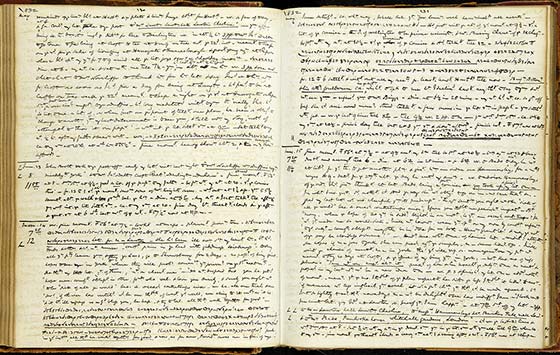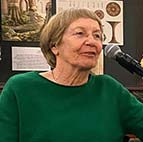

About Jill Liddington: Anne Lister
 I am a historian and author. Since the early 1970s, I've been passionate about women's history. Many of us were inspired by Sheila Rowbotham's classic Hidden from History (1973). Back then, there were only a few of us. Then local Women's History Groups sprang up. I've even kept this badge from back then, demanding 'Write women back into history'!
I am a historian and author. Since the early 1970s, I've been passionate about women's history. Many of us were inspired by Sheila Rowbotham's classic Hidden from History (1973). Back then, there were only a few of us. Then local Women's History Groups sprang up. I've even kept this badge from back then, demanding 'Write women back into history'!
My original love was Votes for Women. My first book, One Hand Tied Behind Us (1978), soon became a suffrage classic - and more followed. Before too long, women's history became mainstream - as the global reach of BBC's Gentleman Jack (2019, 2022) now testifies.
Back to 1980s
I moved to Halifax in 1980. Soon I was going down to Greenham, and writing about how suffragettes and suffragists had helped inspire the Women's Peace Camp. About Jill, suffrage. Its history fascinated me, and The Long Road to Greenham Common (Virago 1989) won the 1990 Fawcett Book Prize. So, all that kept me busy.
I was also busy teaching ~ for Leeds University's adult education department. So busy that in 1984 I merely noted a Guardian article, 'The two million word enigma' about Anne Lister of Shibden Hall. It told how her diaries (preserved in Archives, Halifax Library) were not only two million words long, but also her handwriting was 'one of the most illegible…and some of the diary is in code'. And it added: she 'may well have been a lesbian'. However, I was so busy, I just cut out the article and put it aside.
Working in adult education meant offering mature students new opportunities. So by 1988 my hectic timetable included teaching a New Opportunities for Women course in Halifax ~ introducing students to the Great 1832 Reform Act, for example.
Uncovering forgotten lesbian history
Anne Lister of Halifax
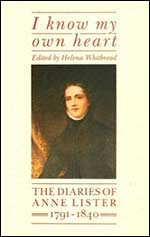 Then Helena Whitbread's I Know My Own Heart appeared (1988). Whitbread's edition of the diaries (1817-24) focused on the coded sections, vividly detailing young Anne's love affairs with other women - most notably with Mariana Lawton. Mariana had made a prudent marriage to a wealthy older man; but ~ inconveniently ~ her husband would not die.
Then Helena Whitbread's I Know My Own Heart appeared (1988). Whitbread's edition of the diaries (1817-24) focused on the coded sections, vividly detailing young Anne's love affairs with other women - most notably with Mariana Lawton. Mariana had made a prudent marriage to a wealthy older man; but ~ inconveniently ~ her husband would not die.
This book had great impact - not least in our local community. Halifax, a medium-size town, once boasting thriving textiles and engineering industries, retained extremely strong local pride. Having lived in London and Manchester, cosmopolitan cities both, I was initially hit by how traditionally-minded Halifax was. A fairly conservative (small 'c') town, feminism was only just arriving. And it was certainly not a brilliant place to be gay in.
Yet here was a local lesbian! Moreover, in the early-nineteenth-century Anne Lister had enjoyed extraordinary freedoms, little dreamt of by later women. Fascinated, I soon introduced pages of Whitbread's book into the classroom. My New Opportunities students, to a woman, all exclaimed: 'We'd no idea that sort of thing went on round here! No one told us!'
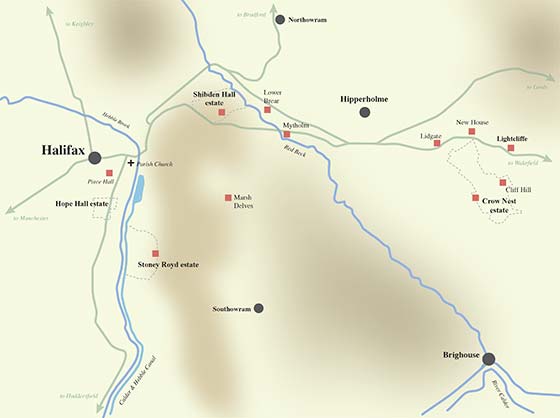
Halifax, Shibden & Lightcliffe, based on Myers' map 1834-35
Jill meets Anne
By now I was by now totally fascinated. I soon began visiting the Archives, adding copies of original diary pages to my teaching material. Then, in 1989, the Halifax Antiquarians Society ran a day-school in the Library on Anne. Not only did local historians talk about the earlier diary editors (before I Know My Own Heart), but also the Shibden Hall curator spoke about how 'Diaries are dangerous things'. I recall extremely heated debate: indeed, I noted 'blood on the Halifax Library carpet' in my own comments of the day.
My curiosity was now razor sharp. I could not let this go. Not least because Anne Lister was sitting on my very doorstep. I lived in Halifax, down by the Calder & Hebble Canal. Shibden Hall was about a mile away, yet hidden from the town by a steep hillside. An energetic walker - as I soon discovered Anne Lister to be - could easily stride that distance in half-an-hour. So, rather more slowly, I walked up to Shibden's pastoral idyll.
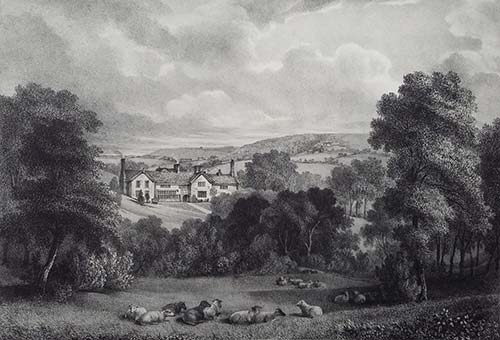
Shibden Hall, by John Horner, Buildings in the Town & Parish of Halifax, 1835
Plunging into Archives
Anne Lister now had me in her fierce grip! I had to plunge right in - deep. In 1990, I returned to the Archives to check the Guardian's arithmetic. Could it really be two million words? Back then, the fragile diaries could only be read on microfilm. I spooled through these endless reels, methodically jotting down words-per-line (both code and handwriting), lines-per-page, pages-per-volume. By the time I got to the dense 1830s' journals, I felt my sanity seeping away.
Then I did my calculations. It came to four million words! Ashen-faced, I retreated from Halifax Library. Back home, I checked my figures. it was still four million words - more than three times the length of Samuel Pepys' 1660-69 diary! Of this, I calculated roughly one-sixth was written in Anne's private code. I determined to dig deeper. But first I needed a research strategy!
Presenting the Past
Diary pages, 1832 May 12th-15th.
West Yorkshire Archives Service, Calderdale .Click image to enlarge
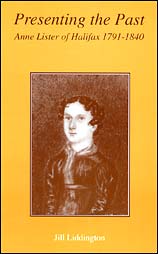 Helena Whitbread had worked on the coded sections first, only then going back to Anne's heavily-abbreviated handwriting. I wondered: was this really the best way for me to understand Anne Lister? Focusing on just the coded sections is undoubtedly tempting. But to understand how Anne managed to do all she did, the historical context is crucial - found in the handwritten passages.
Helena Whitbread had worked on the coded sections first, only then going back to Anne's heavily-abbreviated handwriting. I wondered: was this really the best way for me to understand Anne Lister? Focusing on just the coded sections is undoubtedly tempting. But to understand how Anne managed to do all she did, the historical context is crucial - found in the handwritten passages.
So I decided to go back, to tell the story of the diaries' melodramatic survival after 1840, and Anne's death in remote Western Georgia. Web link to: Who was Anne Lister? So, in Presenting the Past I record the heroic achievements of earlier editors post-1840, all writing in an era when male homosexuality was criminalised and lesbianism discreetly brushed away. I also decided to plunge in deeper, selecting three sample years: 1806 onwards (earliest diaries, only just discovered); 1819, to see Anne Lister's response to Peterloo; & 1832, to check on her views on the Reform agitation.
Female Fortune: what did Anne Lister do in the 1830s?
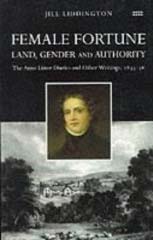 Whitbread had focused on young Anne Lister, taking the story up to 1826 when Anne inherited Shibden. So I decided to dig yet deeper into Anne the mature diarist of the 1830s. This involved years of transcribing (both handwritten and coded diaries of course) plus editing Anne's incredibly detailed daily narrative.
Whitbread had focused on young Anne Lister, taking the story up to 1826 when Anne inherited Shibden. So I decided to dig yet deeper into Anne the mature diarist of the 1830s. This involved years of transcribing (both handwritten and coded diaries of course) plus editing Anne's incredibly detailed daily narrative.
It was totally engrossing - though my eyesight suffered accordingly. Yes, in the pre-digital era of the 1990s, I was still working on printouts (dark grey on light grey?) from the microfilm reels in the Archives in Halifax Library. Here I was offered invaluable help by wonderful archivist staff – notably Dr Alan Betteridge.
Female Fortune opens in December 1833, when Anne returns home to Shibden from visiting Denmark. It tracks her betrothal and marriage to local heiress Ann Walker of Lightcliffe in 1834, with Ann moving into Shibden with Anne and the other Listers in the autumn. It then tracks their life together, including the tumultuous 1835 ‘window-breaking’ election, followed by the ‘mock marriage’ announcements in Yorkshire papers. It ends with the death of Anne’s elderly father in May 1836.
Female Fortune was published in 1998 to warm book reviews. Then in 2001, I met scriptwriter Sally Wainwright who had grown up near Halifax. A mutual friend had given her a copy of Female Fortune - and Sally too became gripped by the Anne Lister story. We worked enthusiastically together, Sally pitching drama proposals to TV companies. However, back then, Sally was a jobbing scriptwriter, working on the soaps. The time wasn't yet right for an ambitious drama series. The project had to be put on hold. We had to go our separate ways, just exchanging Christmas cards etc.
Nature's Domain

However I wanted to continue working on Anne Lister. I went back to 1832, a momentous year for Anne. Nature's Domain (2003) opens in April 1832, with Anne making her forlorn way back to Shabby Shibden. She had been betrayed by yet another woman's conventional marriage plans. She now sought a life partner herself. Soon she became reacquainted with neighbouring heiress Ann Walker of Crow Nest estate.
This relationship, though troubled, would change Anne's life forever. However, very little back then was known of Ann Walker and indeed of the family estate in Lightcliffe. Going back into Halifax Archives, I opened up the cobwebbed Crow Nest files, to see the Walkers' take on Anne Lister. I soon found my fingers covered in dust: I was the first person ever to read them. It was as if Ann Walker had been almost forgotten.
1832 was of course also the year when, thanks to the Reform Act, Halifax went from political nonentity to a town electing not just one but two MPs of its own. And Anne, as a local landowner, became politically active, to persuade her tenants who were enfranchised, to vote for the 'Blue' (ie Tory) candidate - as I tell in Nature's Domain (Pennine Pens 2003).
What did Anne Lister do - in 1832?
Forwards - to 2019After 2003 and Nature's Domain, and now with three Anne Lister books out, I knew that for myself I needed a break. I turned back to Votes for Women.
Opportunities now beckoned. First, the 1901 census became available, and like other suffrage historians I realised how illuminating these would be for the formative years of suffragists and suffragettes. Rebel Girls (2006) told the story of the Votes for Women campaign across the vast Yorkshire region. Then the 1911 census, recording lives at the height of the suffrage campaign, was released early. I again plunged in. And Vanishing for the Vote: Suffrage, Citizenship and the Battle for the Census (2014) told the tale of how suffragettes across England resisted or evaded the census enumerators.

I was still working in Continuing Education at Leeds University, and Sally was producing a series of highly successful drama scripts – including Last Tango in Halifax and Happy Valley.
Time passed. Interest in Anne Lister continued to grow. In 2011, Anne's diaries were added by UNESCO to its UK Memory of the World register: global recognition indeed! And in 2014, I was both surprised and delighted when on 'Desert Island Discs' Sally chose Female Fortune as the book she'd take with her if she was ever marooned on a desert island. Surely one of the greatest honours for any author?
So I knew Sally hadn’t forgotten her Anne Lister enthusiasm! When she pitched her script ideas again, the BBC’s response now was ‘Yes please!’ So I began working with her again, providing research as she plotted the episodes for her drama series.
However, with the 2018 suffrage centenary and so Vote 100 celebrations looming, I peeled off – as I could not keep away from celebrating this Votes for Women triumph. So, as 2018 ended and Sally’s new drama approached, now titled Gentleman Jack, I had rapidly to switch my mind back from 1918 to the 1830s. And it was so well worth it!

I'm pleased and proud that Sally has brought Anne Lister's 1830s story to an infinitely wider public than ever my books could reach. I eagerly watched the BBC1's Gentleman Jack drama, both series 1 (2019) and series 2 (2022) with keen interest and enthusiastic appreciation. Television audiences, both here, in the US and globally, lapped up Anne Lister and all she achieved ~ in that unlikely location: Halifax, a proud, traditional, Yorkshire town.
Now, COVID permitting, visitors from around the world (most especially the US) flock to Halifax for Anne Lister Birthday Celebrations in spring – for a cultural feast of Anne Lister treats.
So, since its early beginnings back in the 1970s, our badge’s demanding ‘write women back into history’ seems – over the last half-century – to have been met. With Anne Lister and Gentleman Jack, in spades! – I hope you enjoy everything Anne Lister as much as I do!
HebWeb interview between Jill Liddington and George Murphy
Dr Jill Liddington is an Honorary Research Fellow in the Centre for Interdisciplinary Gender Studies at the University of Leeds.
Journalists contact Rhian Davies at Manchester University Pres (MUP) for a review copy of As Good As A Marriage - by email.
